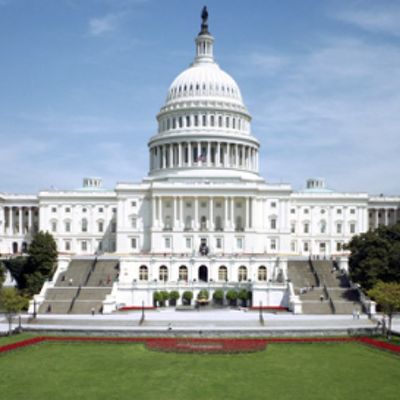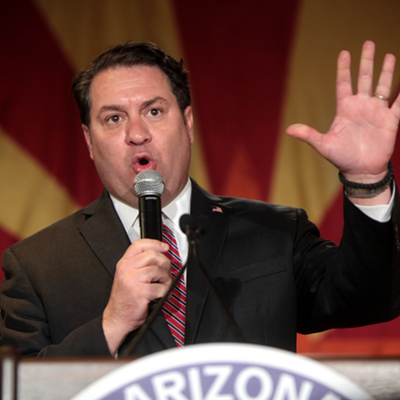THE BATTLE LINES ARE DRAWN
The Independent Redistricting Commission's effort to draw up new congressional and legislative maps has been an ugly process.
We've seen fiery meetings where Tea Party activists roasted IRC chairwoman Colleen Mathis. We've seen a trumped-up investigation by Republican Attorney General Tom Horne that was tossed out by the courts. We had a short-lived constitutional crisis when Republican Gov. Jan Brewer, backed by GOP members of the Arizona Senate, tried to give Mathis the boot, only to have the Arizona Supreme Court step in and reinstate the chairwoman, because Brewer's grounds for removal were so weak.
And now, as of last week, we have the new maps, unless an IRC analysis or a U.S. Justice Department review determines they need tweaking.
"To quote Bruce Springsteen: I believe in the promised land," said Mathis as the commission voted to approve the legislative map. "I think we've really achieved great maps."
Mathis appeared to be on the verge of tears as the final votes were taken by the five-member committee. But she wasn't holding back tears of frustration or anger after casting her final vote (which might be expected, considering how the state's elected GOP officials have treated and trashed her). She was fighting off tears of joy and gratitude while praising her colleagues and the few hardcore members of the public still hanging around the Tempe hotel conference room at 10 p.m.
The commission approved the congressional maps on Tuesday, Dec. 20, on a 3-2 vote, with the chairwoman joining the two Democrats to approve a political landscape of four safe Republican districts, two solid Democratic districts, and three districts that were deemed competitive. Oddly, this breakdown—which assures that Republicans will hold at least four districts in their worst year, and as many as seven in their best year—has GOP activists and elected officials crying about being treated unfairly.
Here are the key takeaways for Southern Arizona: Congressional District 7, which is now represented by Congressman Raúl Grijalva, hasn't changed all that much, although he did lose some precincts in Yuma that tended to vote Republican. It's still heavily Democratic—43 percent Dem, compared to 22 percent Republican—and will be known as Congressional District 3 next year.
But Congressional District 8, which is now represented by Congresswoman Gabrielle Giffords, has undergone some significant changes in its transformation into Congressional District 2, which is more or less evenly split between Republicans at 34.7 percent, and Democrats at 34.2 percent, leaving the 31 percent of independent/other voters as the deciding factor in future elections.
The final map has CD2 picking up all of Cochise County, a change to earlier drafts that had the new Congressional District 1—which includes the eastern side of the state and chunks of northern Arizona, including Flagstaff and the Navajo Nation—extending via a narrow strip through Cochise County to the Mexico border.
Here's how the new CD2 is significantly different from the old CD8: It loses areas northwest of Tucson, such as Marana, Oro Valley and SaddleBrooke. That particular community of interest is going into the new CD1, which has Republican activists steamed, because they're worried that their future representative will care more about Flagstaff than them.
CD1 is considered a competitive district; just less than 40 percent of the voters are Democrats, while 30 percent are Republican, and 30 percent are independents/other.
We confess that we are a bit surprised by the sudden love of Tucson coming from the Republicans up north, given that most of the time, their GOP elected representatives—we're looking your way, Al Melvin/Terri Proud/Vic Williams—treat the voters down here in T-town with contempt and dismissal.
But we digress. Much of the area that makes up the new CD1 is now represented by Congressman Paul Gosar, a Republican elected on the Tea Party wave of 2010. We'll see whether Gosar decides to hang on in CD1, where former Democratic congresswoman Ann Kirkpatrick is already working on a comeback, and Navajo newcomer Wenona Benally Baldenegro is courting grassroots support.
Gosar could also try to run in the new Congressional District 4, a rural district on the west side of the state where two other Republicans are already exploring campaigns: State Sen. Ron Gould of Lake Havasu, whose hard-core conservatism has led him to reflexively oppose nearly everything at the Arizona Legislature; and Pinal County Sheriff Paul Babeu, who has been doing his own grooming of the Tea Party in recent years.
SOUTHERN ARIZONA MUSICAL CHAIRS
Speaking of new political maps: The Independent Redistricting Commission passed the new legislative map, also on a 3-2 vote. It earned bipartisan support when Republican commissioner Richard Stertz joined Democratic commissioner Linda McNulty and chairwoman Colleen Mathis.
Stertz initially voted against the map, but got worried that it might get worse for Republicans if McNulty and Mathis decided to make changes to win the vote of the other Democrat on the commission, Jose Herrera.
The map is pretty good for Republicans overall. There are various ways to measure whether a district is competitive (and the IRC considered a bunch of them, crunching numbers in different ways to measure how Democratic and Republican candidates fared over the last decade). But going by voter registration, which tends to be a relatively reliable predictor of election outcomes, you don't have a whole lot of competitive legislative districts. If you consider a competitive district to be one in which a political party outnumbers another by 8 percentage points or less, you end up with just five competitive districts in Arizona. (Two of them make up most of Tucson, by the way.)
By that standard, Democrats have a strong hold on nine of the 30 legislative districts, while Republicans have a tight grip on 16 of them—or more than half, which is pretty bad news for Democrats if they have plans to ever control the statehouse.
It's possible that Dems could outperform Republicans in a swing year and win every competitive district. But that still leaves them in the minority, unless they strike lightning somewhere else—an outcome that goes a long way to discredit the Tea Party narrative that Democrats rigged the map to give themselves an unfair advantage.
The new maps have scrambled Southern Arizona's legislative lineup. Among the results: Three Republican House members—David Gowan, David Stevens and Peggy Judd—find themselves in one district, which sets up a game of musical chairs. Meanwhile, Sen. Frank Antenori and Rep. Ted Vogt find themselves in a district that leans Democratic, although Antenori may end up running for Congress in the new CD2. Green Valley, which made up a major community of interest in Antenori and Gowan's District 30, is now part of a heavily Democratic/Latino district that stretches from Tucson's southside to Nogales and then goes along the border.
Some lawmakers may be looking for a new home. Sen. Olivia Cajero Bedford, a Democrat who represents Tucson's westside, told The Skinny that she'll need to move if she wants to remain in the Legislature, because her Tucson Mountains neighborhood got drawn into a heavily Republican district that includes Oro Valley and Marana.
"I'm screwed," Bedford said. "It's sad to think you won't be representing the same people you've been representing for the last eight or nine years. ... I've worked hard to earn their respect, and I don't want to leave them."
She plans to move, she said, so she has at least a fighting chance of keeping her job.












